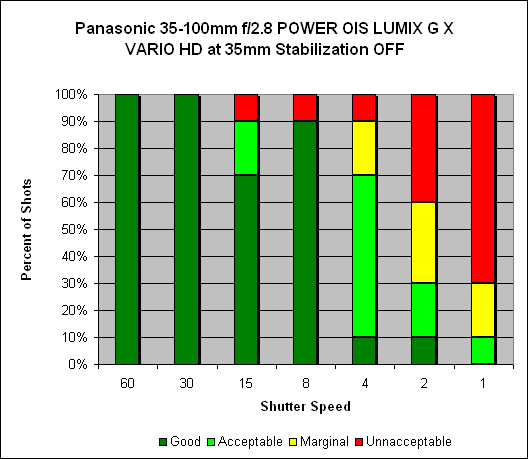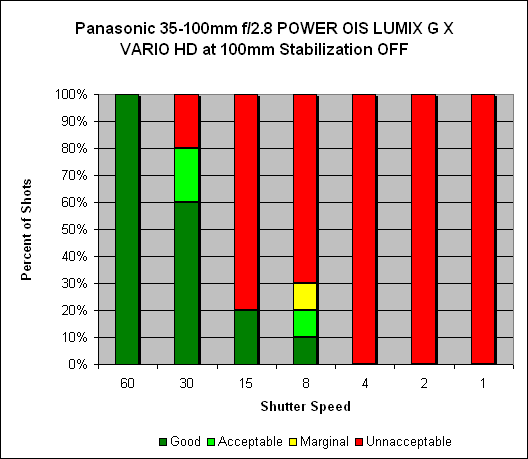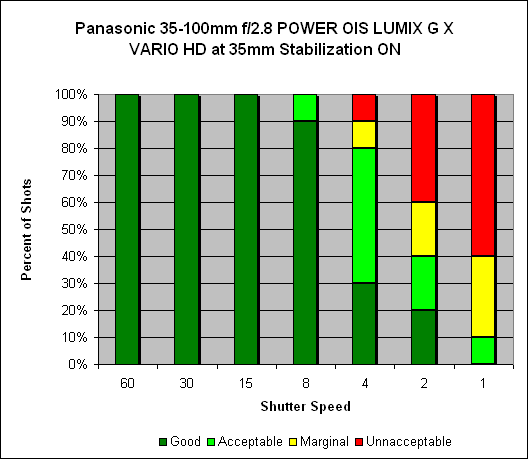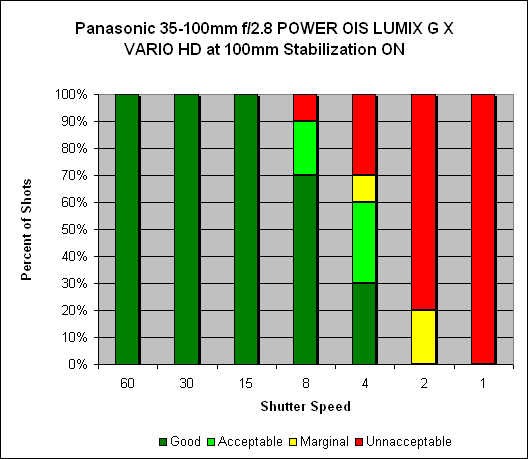Most people tend to think of image stabilization as being mainly for telephoto lenses. While it's true that their longer focal lengths tend to magnify the effects of camera shake, image stabilization can provde a very useful assist at wider angle focal lengths as well; anyone who's ever tried to blur the image of a waterfall, while keeping the surrounding landsape tack-sharp knows exactly what I'm talking about.
At 35mm, we see a general improvement in hand-holding ability, but nothing seriously eyebrow-raising - perhaps a single stop of improvement. This isn't hugely surprising, given that image stabilization systems are more noteworthy on telephoto results rather than wide angle, however, at an equivalent of 70mm, you might expect to see a little bit more performance. That said, getting 90% sharp shots at 1/8 of a second is pretty impressive.
 |
| Mouse over this chart to show results with IS activated. |
Zoomed in to 100mm, we see a bit better showing - perhaps 2 1/2 stops of hand-holding improvement. Since the camera-lens combination is already fairly easy to hold, it's not surprising that even with the stabilization system disengaged we're showing 100% sharp shots at 1/60 of a second. This is improved to 100% sharp shots at 1/15 of a second - a very nice showing considering an effective 200mm field of view. Now just get your subject to be still for 1/15 of a second, and you're in business!
 |
| Mouse over this chart to show results with IS activated. |
IS systems tend to provide more benefit to less-stable shooters than very steady ones, so most users will see the same or greater amounts of shake reduction as we measured here. You can read more about our IS test methodology here: SLRgear IS Test Methodology, v2.

